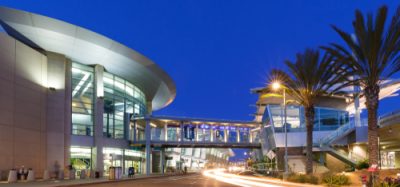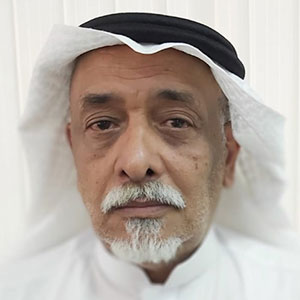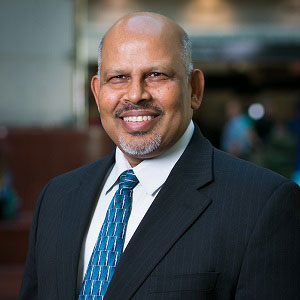Sonja Strand discusses the latest in LED lighting technology
Posted: 19 December 2013 | Sonja Strand, Director of Airport Lighting, Hella | No comments yet
With a heritage spanning 114 years, Hella is a pioneering lighting and electronic equipment provider. Sonja Strand, Director of Airport Lighting at Hella, discusses the latest in LED lighting technology…
Hella was launched in 1899 as a factory specialising in the production of lanterns, headlamps, horns and fittings for bicycles, carriages and automobiles. Barely recognisable from its modest roots, today the Hella Group employs 29,000 people and has offices in all major world regions.
The company features three commercial segments: Automotive which includes the development, production and marketing of lighting and electronic products; Aftermarket which comprises over 38,200 items showcasing products from the lighting, electric, electronic and thermal management segments; and Special Applications which supplies target groups ranging from the producers of construction machinery through boat builders right up to municipalities and energy suppliers with innovative lighting and electronic products.
With lighting at its core, Hella has been a pioneer in the light-emitting diode (LED) technology sector for more than 20 years and today is the market leader in LED runway lighting. “Hella was actually the first supplier to offer the full range of airfield lights in LED,” explains Sonja Strand, Director of Airport Lighting at Hella. “Our portfolio includes constant current regulator (CCR), FLASH and precision approach path indicator (PAPI) systems, electric control and the entire programme of signs and elevated and inset lights for runways, taxiways and aprons.” A trusted brand, Hella’s LED airfield lighting meets various international standards such as ICAO, FAA and STANAG and is installed in airports of all categories throughout the world.
Join us live: Shaping the Next Generation of Hold Baggage and Air Cargo Screening
Join us live for an insightful webinar on 11th December at 14:00 GMT, in collaboration with Smiths Detection, as we explore the strategic balance of operational efficiency, regulatory compliance, and sustainability in high-volume security environments.
This session offers a focused look into future-proofing your security strategy.
Key learning points
- Cost Reduction: Strategies to minimize bag travel time while simultaneously reducing operational costs.
- Regulatory Roadmap: Insights into the next wave of regulatory changes and their impact on future investment decisions.
- Sustainable Systems: Practical approaches to building sustainability into security systems and lowering the total cost of ownership (TCO).
- Scalable Solutions: Real-world examples of scalable systems supporting current airport growth and preparing for tomorrow.
Register now for expert insights, case studies, and actionable strategies on operational efficiency!
So what are the benefits of LED lighting over more traditional methods? “Changing to LED lighting is profitable in many ways,” says Sonja. “LED uses less energy to operate the lights; resulting in less CO2 emissions.” In fact, with around 50,000 hours, the service life of LEDs – when compared to halogen light sources – is significantly longer, while their power consumption is up to 85 per cent lower. LED lighting also reduces cash costs, with spare parts around 60 per cent cheaper than alternatives. Sonja reveals that another important factor to consider is that LEDs are mercury-free, which is increasingly important as we approach the EU-wide ban on mercury light sources, which will begin in 2015.
LED lighting also offers numerous safety benefits: “The clear colours and brilliant intensity of the lighting ensures optimal view even during poor weather conditions; providing pilots with clear definition between the taxiway, stop bar and runway lights and ensuring they can make a safe landing on the runway,” reports Sonja.
“The colours in more traditional halogen lighting are known to change at different intensity levels, which can cause a white or red light to appear yellow. If a poor quality colour filter is used even the colour green could end up looking white. However, these issues do not exist in LED lighting as the colours remain constant at every intensity level. This is significant when it comes to avoiding accidents on runways and taxiways, and as a result, lighting and aviation experts deem LEDs to be the best lighting solution for poor weather conditions.”
Hella is dedicated to ensuring its products fulfil its customers’ needs and as such, Hella’s LED lighting products were developed in close collaboration with various international airports. “This ensured airports’ individual requirements could be incorporated wherever possible,” reveals Sonja. This collaboration meant Hella had the opportunity to test new technologies out on the airports, leading to faster product optimisation. “We take our customers seriously; offering them special solutions and independent consultation. Even today after finishing our product portfolio we make strategic alliances with airports to enable us to develop future solutions together,” says Sonja.
Hella is constantly innovating new solutions in the LED lighting market. At inter airport Europe 2013, the company presented a full portfolio of LED lighting, including the Threshold and Wing Bar lights, and Combined Threshold and Runway End inset lights. LED Runway Edge High inset and elevated lights, for 45m and 60m runways, were also exhibited, along with retrofit kits for signage.
“We also presented our Sequence Flashing System (SFL), which is based on LED technology. It’s a new innovation as it uses high power LED technology instead of traditional discharge tubes and is a major step towards achieving lower operational costs and higher personnel safety with a very low installation cost,” explains Sonja. “It’s an improvement on the whole system as the controller supplies power for flashing, heating and communication via a standard installation cable connected in a loop to all fixtures. This means the intensity regulation is performed in each light fixture instead of in the controller; meaning no losses and heating in the controller unit and very little sensitivity to cable resistance from the controller to each light fixture.
“We experienced great success at inter airport Europe 2013. Customers are fascinated by the speed in which Hella’s products are developed and they like the way we do it.”
Biography
Sonja Strand has degrees in international business and business law and over 18 years’ experience in the aviation industry with previous positions including Head of Airport Services & Ground Handling, Head of Human Resource Development and KPMG Business Consultant. Sonja has been with Hella since 2003 when she joined the organisation as an assistant to a member of the board working on international projects. In 2008 she founded the business unit Hella Airfield Lighting where she currently serves as the Director with global responsibility for all activities in this division.
Stay Connected with International Airport Review — Subscribe for Free!
Get exclusive access to the latest airport and aviation industry insights from International Airport Review — tailored to your interests.
✅ Expert-Led Webinars – Gain insights from global aviation leaders
✅ Weekly News & Reports – Airport innovation, thought leadership, and industry trends
✅ Exclusive Industry Insights – Discover cutting-edge technologies shaping the future of air travel
✅ International Airport Summit – Join our flagship event to network with industry leaders and explore the latest advancements
Choose the updates that matter most to you.
Sign up now to stay informed, inspired, and connected — all for free!
Thank you for being part of our aviation community. Let’s keep shaping the future of airports together!














